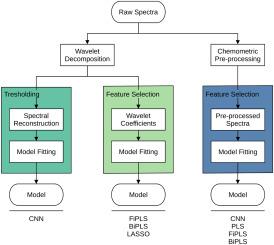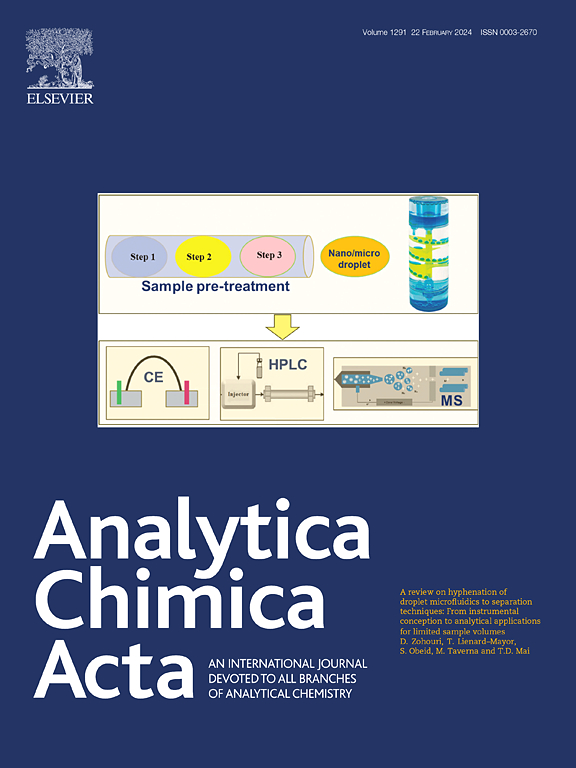A comparative analysis of deep learning and chemometric approaches for spectral data modeling
IF 5.7
2区 化学
Q1 CHEMISTRY, ANALYTICAL
引用次数: 0
Abstract
Background:
This study presents a comprehensive comparison of five different modeling approaches for spectroscopic data analysis. The first approach uses PLS combined with classical chemometric pre-processing (9 models). The second and third approaches use interval PLS (iPLS) with either classical pre-processing or wavelet transforms (28 models). The fourth uses LASSO with wavelet transforms (5 models). Finally, the fifth approach combines CNN with spectral pre-processing (9 models).
Results:
In this paper we consider two low dimensional case studies: a regression problem for a beer dataset (40 training samples) and a classification problem for a waste lubricant oil dataset (273 training samples). The results show that, after exhaustive pre-processing selection, iPLS variants show better performance for the first case study and remain competitive in the second case study. Wavelet transforms proved to be a viable alternative to classical pre-processing, improving performance for both linear and CNN models while maintaining interpretability. For the second case study, with more data, CNNs present good performance when applied on raw spectra and could potentially be used to avoid exhaustive pre-processing selection. However, it was found that CNNs can benefit from some types of pre-processing, leading to improved performance for the first case study and overall better performance for the second case study.
Significance and Novelty:
This study provides a critical and exhaustive comparison of combinations of pre-processing methods and models for spectroscopic data analysis. It was found that no single combination of pre-processing and model that can be identified as optimal beforehand in low data settings.


求助全文
约1分钟内获得全文
求助全文
来源期刊

Analytica Chimica Acta
化学-分析化学
CiteScore
10.40
自引率
6.50%
发文量
1081
审稿时长
38 days
期刊介绍:
Analytica Chimica Acta has an open access mirror journal Analytica Chimica Acta: X, sharing the same aims and scope, editorial team, submission system and rigorous peer review.
Analytica Chimica Acta provides a forum for the rapid publication of original research, and critical, comprehensive reviews dealing with all aspects of fundamental and applied modern analytical chemistry. The journal welcomes the submission of research papers which report studies concerning the development of new and significant analytical methodologies. In determining the suitability of submitted articles for publication, particular scrutiny will be placed on the degree of novelty and impact of the research and the extent to which it adds to the existing body of knowledge in analytical chemistry.
 求助内容:
求助内容: 应助结果提醒方式:
应助结果提醒方式:


